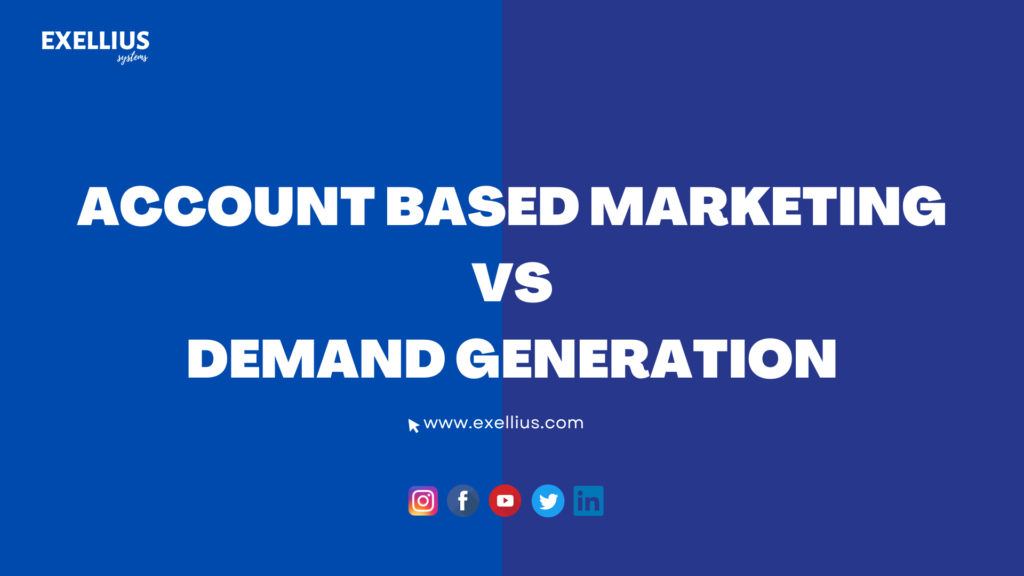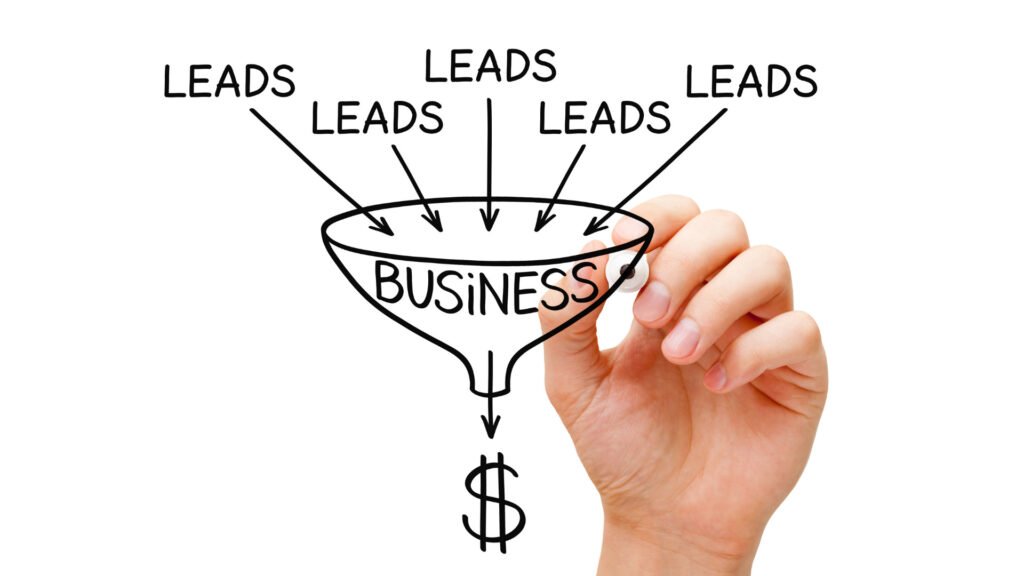
Outline
- Introduction
- Understanding Account-Based Marketing (ABM) 2.1 Definition and Purpose 2.2 Key Components of ABM
- Exploring Demand Generation 3.1 Definition and Purpose 3.2 Key Components of Demand Generation
- Differentiating ABM and Demand Generation 4.1 Targeting Approach 4.2 Focus on Accounts vs. Leads 4.3 Personalization and Customization 4.4 Measurement and ROI
- Choosing the Right Strategy for Your Business 5.1 Considerations for ABM 5.2 Considerations for Demand Generation
- Combining ABM and Demand Generation 6.1 Benefits of Integration 6.2 Best Practices for Integration
- Conclusion
- FAQs 8.1 What is the main difference between ABM and demand generation? 8.2 Can ABM and demand generation be used together? 8.3 How do you measure the success of ABM and demand generation? 8.4 Which strategy is more suitable for B2B companies? 8.5 How can I get started with ABM or demand generation?
Account Based Marketing vs. Demand Generation
Account-Based Marketing (ABM) and Demand Generation are two popular marketing strategies used by businesses to drive growth and achieve their marketing objectives. While both approaches aim to generate leads and revenue, they differ in their focus, targeting methods, and overall approach. In this article, we will delve into the nuances of ABM and Demand Generation, understand their key components, and explore how they can be effectively utilized to maximize results.
Understanding Account-Based Marketing (ABM)
Definition and Purpose
Account-Based Marketing (ABM) is a strategic approach that focuses on targeting specific high-value accounts and treating them as individual markets. Unlike traditional lead generation methods that cast a wide net to capture potential leads, ABM aims to engage and nurture a select group of key accounts by delivering personalized, tailored experiences throughout the customer journey. The goal of ABM is to establish strong relationships with target accounts, increase customer lifetime value, and drive revenue growth.
Key Components of ABM
ABM involves a multi-dimensional approach that requires collaboration between marketing and sales teams. Key components of ABM include:
- Account Selection: Identifying and selecting target accounts based on criteria such as revenue potential, fit with the company’s ideal customer profile, and strategic alignment.
- Personalization and Customization: Tailoring marketing messages, content, and campaigns to resonate with the specific needs and pain points of target accounts.
- Relationship Building: Building personalized relationships with key stakeholders within target accounts through personalized outreach, account-based content, and customized experiences.
- Measurement and ROI: Tracking and measuring the impact of ABM efforts on key metrics such as pipeline acceleration, deal velocity, and revenue generation.
Exploring Demand Generation
Definition and Purpose
Demand Generation refers to the process of creating awareness, interest, and demand for a company’s products or services. It focuses on generating leads and nurturing them through the marketing funnel until they are ready to make a purchase. Demand Generation strategies aim to attract a wide audience, educate them about the brand’s value proposition, and engage them through various marketing channels. The ultimate goal of demand generation is to drive conversions and revenue growth.

Key Components of Demand Generation
Demand Generation encompasses a range of activities and tactics designed to capture and nurture leads. Key components of demand generation include:
- Audience Research: Understanding the target audience, their pain points, and their buying behavior to develop targeted messaging and campaigns.
- Content Marketing: Creating and distributing valuable, relevant content to attract and engage potential customers. This includes blog posts, whitepapers, videos, social media content, and more.
- Lead Generation: Implementing strategies to capture contact information and convert website visitors into leads. This can be done through lead magnets, landing pages, webinars, and gated content.
- Marketing Automation: Utilizing automation tools to streamline and personalize the lead nurturing process. This involves email marketing, drip campaigns, and lead scoring to deliver relevant content to prospects.
- Measurement and Analytics: Tracking and analyzing key metrics such as website traffic, conversion rates, and marketing-qualified leads to assess the effectiveness of demand generation efforts.
Differentiating Account Based Marketing VS Demand Generation
While both ABM and Demand Generation aim to generate leads and revenue, there are distinct differences between the two strategies.
Targeting Approach
ABM focuses on targeting a select group of high-value accounts, treating them as individual markets. On the other hand, Demand Generation takes a broader approach by targeting a wide audience and nurturing them through the marketing funnel.
Focus on Accounts vs. Leads
ABM places emphasis on building relationships with key stakeholders within target accounts. It prioritizes quality over quantity and aims to deepen engagement with a smaller number of high-potential accounts. In contrast, Demand Generation focuses on generating and nurturing leads, casting a wider net to capture a larger pool of potential customers.
Personalization and Customization
ABM is highly personalized and customized. It tailors marketing messages, content, and campaigns to address the specific needs and pain points of individual target accounts. Demand Generation also utilizes personalization but on a broader scale, aiming to resonate with a larger audience segment.
Measurement and ROI
Both ABM and Demand Generation require measurement and tracking of key metrics to assess their impact. However, the metrics differ. ABM focuses on pipeline acceleration, deal velocity, and revenue generated from targeted accounts. Demand Generation measures metrics such as website traffic, conversion rates, and marketing-qualified leads.
Choosing the Right Strategy for Your Business
When deciding between ABM and Demand Generation, it’s essential to consider the specific needs and goals of your business. Here are some factors to consider:
Considerations for ABM
- Identify high-value target accounts that align with your ideal customer profile.
- Evaluate the level of personalization and customization required to engage and nurture these accounts effectively.
- Assess the collaboration and alignment between your marketing and sales teams for seamless execution.
- Determine the resources and budget needed to implement ABM successfully.
Considerations for Demand Generation
- Understand your target audience and their preferences to develop effective messaging and campaigns.
- Evaluate the scalability of your marketing efforts to reach a broader audience.
- Assess the marketing technology and automation tools needed to streamline lead generation and nurturing processes.
- Determine the resources and budget required to implement demand generation strategies effectively.
Combining ABM and Demand Generation
While ABM and Demand Generation are distinct strategies, they can be complementary and used together to maximize results. Integrating both approaches allows businesses to leverage the benefits of personalized account-based targeting while still capturing a wider audience. Here are some benefits and best practices for integrating ABM and Demand Generation:
Benefits of Integration
- Enhanced targeting: Combining ABM and Demand Generation allows you to focus on high-value accounts while still attracting a broader audience.
- Increased brand awareness: Demand Generation efforts can create awareness among a wider audience, which can indirectly benefit targeted accounts.
- Efficient resource allocation: By integrating strategies, you can optimize resource allocation and achieve a balance between personalized account targeting and broader lead generation efforts.
Best Practices for Integration
- Define your goals: Clearly establish the objectives you want to achieve through the integration of ABM and Demand Generation. This will guide your strategy and ensure alignment across teams.
- Align marketing and sales: Foster collaboration and communication between marketing and sales teams to ensure a seamless transition between ABM and Demand Generation activities. This alignment is crucial for effective lead handoff and conversion.
- Develop a unified customer journey: Create a cohesive customer experience by mapping out the touchpoints and interactions for both targeted accounts and broader leads. This will ensure consistent messaging and a smooth transition between the two strategies.
- Leverage data and analytics: Utilize data to gain insights into the performance of both ABM and Demand Generation efforts. Measure key metrics and use the findings to optimize your integrated strategy.
- Continuously optimize and iterate: Monitor the performance of your integrated approach and make adjustments based on data and feedback. Test different tactics and messaging to refine your strategy over time.
By combining ABM and Demand Generation, businesses can take advantage of the strengths of each strategy and achieve a comprehensive marketing approach that drives revenue growth and maximizes ROI.
Conclusion
Account-Based Marketing (ABM) and Demand Generation are two distinct but valuable marketing strategies. While ABM focuses on personalized engagement with high-value accounts, Demand Generation targets a broader audience to generate leads and drive conversions. Both approaches have their benefits and can be integrated to maximize results. Understanding your business goals, target audience, and available resources will help you choose the right strategy or combination of strategies for your organization’s success.
FAQs
1. What is the main difference between ABM and demand generation?
ABM focuses on targeting specific high-value accounts and personalizing marketing efforts for them, while demand generation aims to attract and engage a broader audience to generate leads.
2. Can ABM and demand generation be used together?
Yes, ABM and demand generation can be integrated to create a comprehensive marketing strategy that combines personalized account targeting with broader lead generation efforts.
3. How do you measure the success of ABM and demand generation?
ABM success can be measured through metrics like pipeline acceleration, deal velocity, and revenue generated from target accounts. Demand generation success can be measured through metrics like website traffic, conversion rates, and marketing-qualified leads.
4. Which strategy is more suitable for B2B companies?
Both ABM and demand generation are valuable for B2B companies. The choice depends on factors like target account value, sales cycle length, and available resources. Some B2B companies may find a combination of both strategies to be the most effective approach.
5. How can I get started with ABM or demand generation?
To get started with ABM or demand generation, assess your business goals, target audience, and available resources. Develop a strategy, align your marketing and sales teams, and leverage relevant tools and technologies to implement your chosen approach effectively.
Know more about our Media Partner: Media Martech



